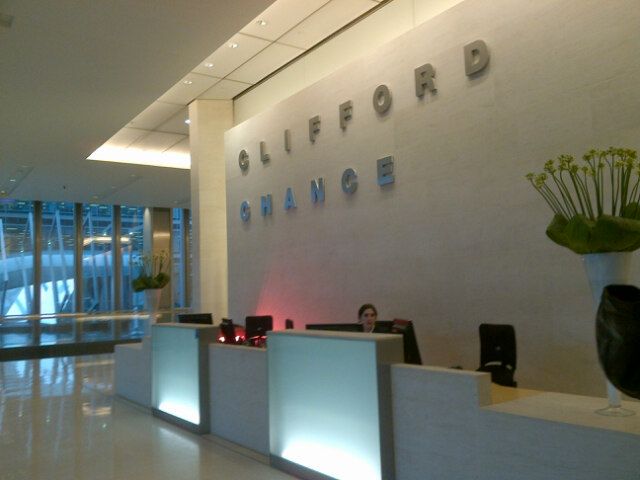The Royal Bank of Scotland has today published Clifford Chance’s review of the central allegation made against the bank in the damning Tomlinson Report written by Dr Tomlinson, commissioned by Business Secretary Vince Cable. Critics have slammed the bank’s report as a “whitewash” and believe that the report does not go as far as it should have to uncover what was happening in the ‘business support unit’ Global Restructuring Group (GRG).
Back in November 2013, Sir Andrew Large published his own report into the bank’s lending practices and ordered RBS to set up an enquiry into the way it handled businesses facing difficulties and distress. Ross McEwan, Chief Executive of RBS, accepted that Sir Andrew Large’s RBS Independent Lending Review report was a “tough read” for the bank and confirmed that it had instructed Clifford Chance to lead an internal investigation as to whether it was guilty of systematically defrauding its customers.
Findings of “Independent” Clifford Chance Report for RBS
The report, which RBS paid £1.5m for, has been welcomed by RBS as it finds “no evidence of systematically defrauding its customers”. However, these findings are in stark contrast to allegations made in Dr Lawrence Tomlinson’s report which was compiled using first-hand experience from businesses who felt that the bank had acted like a “hit squad” by deliberately causing their healthy businesses go bust for the bank’s personal gain.
The review was overseen by a bank executive rather than a non-executive director and its independence is questionable. It seems that many questions have been left unanswered such as why RBS’s GRG has not explained the size of the fees it charged and the accuracy of its asset valuations.
Some allegations against RBS by Dr Lawrence Tomlinson were only partially addressed by the Clifford Chance report. In respect of the inaccuracy of asset valuations, Clifford Chance concluded that there was:
“…no evidence that the bank deliberately manipulated valuations to procure a customer’s transfer to [Business Restructuring Group].”
Clifford Chance also said that it did not see “any instances of an LTV breach being the event that precipitated transfer to BRG.” However, whilst Clifford Chance had access to copies of property valuations for each of the cases it examined, it “did not test the accuracy of the bank’s valuation methodology” when coming to its conclusion.
Clifford Chance Report finds Problems with Transparency of Pricing in RBS GRG
With regard to whether GRG acted as a ‘profit centre’ for the bank, Clifford Chance also considered the fees charged to RBS customers in GRG. They found that a number of complainants commented that they felt pricing of restructured facilities lacked transparency.
Their report acknowledged that GRG had been aware of complaints regarding pricing transparency from polls conducted at least as early as 2008 (this was an area identified as a priority to improve) but found:
“In reviewing the files, we found it difficult to understand how the bank calculated the fees which it proposed to customers in any particular case and therefore found it difficult to assess allegations of unfairness.”
Tomlinson Report: Recap of Findings
Critics are of the opinion that the report has not done enough to address the allegations made by Dr Lawrence Tomlinson in the Tomlinson Report. In summary, the Tomlinson Report included the following allegations:
- Inaccuracy and manipulation of property asset valuations. Specifically, Dr Tomlinson alleged that businesses’ assets had been undervalued for the purpose of determining adherence to loan-to-value covenants’;
- Technical or “insignificant” breaches of covenants being used to bring businesses into default and transfer them out of local management;
- Transparency of decision making about the transfer of a business into GRG. The report alleged that “there is much confusion on the part of businesses” and that “the rationale and reason for their treatment is not clear to the business at the time it happens”;
- “Excessive” fees and increased interest payments charged to businesses upon entering GRG; and
- Allegations of conflicts of interest arising from the sale of assets. Specifically, the report alleged that conflicts of interest existed between West Register, a property management subsidiary of RBS which frequently bought distressed assets, and BRG, which sold distressed assets.
It remains to be seen how the Financial Conduct Authority (FCA) will consider this report. As we had previously reported, the FCA are due to publish their own findings in due course.
The full report entitled Independent Review of the Central Allegation made by Dr Lawrence ToMlinson in Bank’s Lending Practices: Treatment of Businesses in Distress can be read here:
Clifford Chance LLP Report (PDF) & Clifford Chance LLP Report (Text)
Lawrence Tomlinson’s report can be read here: Tomlinson Report (PDF) & Tomlinson Report (Text)
Sir Andrew Large’s report can be read here: RBS Independent Lending Review Report (PDF) & RBS Independent Lending Review Report (Text)

